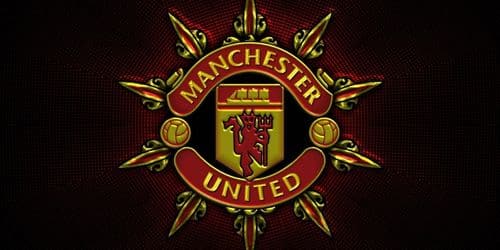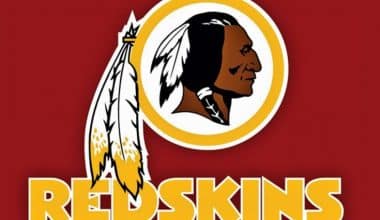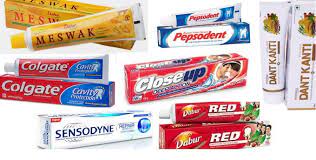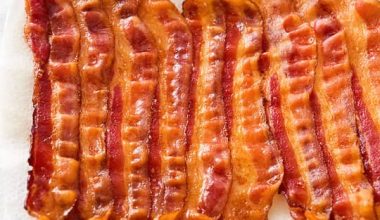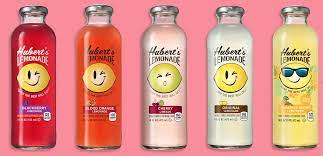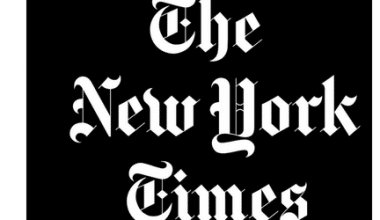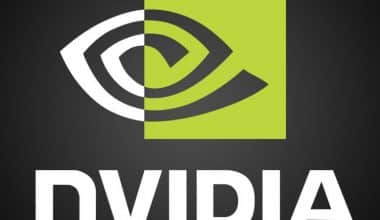The famous American Glazer family has been in charge of the Manchester United FC logo since 2003. They have won many trophies and are thought to be among the best professional teams in the UK and Europe. It is one of the world’s oldest clubs, having opened in 1878. This article talks about the history of the “red devil” Manchester United FC logo.
What Is the Meaning of the Manchester United Logo?
The original Manchester United FC logo symbol was based on the city’s coat of arms, which featured the city’s motto, “Concilio et Labore,” which translates to “Wisdom and Effort,” and three yellow stripes, which stood for the Irwell, Irk, and Medlock rivers.
Red Devil Manchester United Logo
The Newton Heath LYR Football Club laid the groundwork for what would become Manchester United in 1878. The club was founded by the Manchester Newton Heath railway depots department. The club joined the local league for real in 1888, and most of its members were railroad workers who played against teams from other departments.
The nickname “Red Devils” refers to the Manchester United logo, which is one of the most well-known football teams in the world. Not only is the nickname one of the most valuable brands in sports, but it is also easy to remember.
In 2019, the marketing company Kantar found that the club has 1.1 billion fans and followers, making it the most popular football team in the world. In June 2021, William Hill came to the same conclusion by looking at how people search on Google and how they act.
Red Devil Wasn’t the Manchester United Logo Name Before
During the 1950s and 1960s, United was called the “Busby Babes” after their popular manager at the time. Busby has been in charge of the club since 1945. During his time there, the team went from being a bunch of misfits to being a champion.
The club quickly put him in a position of power, and he quickly became known across the country. Busby Babes got their name from the group’s youth.
In 1973, Sir Matt Busby, the legendary manager of Manchester United FC, made the club use a logo with a demonic figure. After eight of his Babes died in the Munich plane crash, Busby was adamant that the team’s name should no longer be Busby’s Babes. Salford’s Red Devils rugby club gave him the idea for a scary and fitting football team name.
Why Is the Manchester United FC Logo Dubbed “The Red Devil”?
In fact, when Manchester United was first formed in 1878, they were called “The Heathens.” They first played as the Newton Heath Football Club in the early 1900s.
Before the club changed its name to “Manchester United” in 1902, it was usually just called “United.” When the famous Sir Matt Busby took over the club in 1945, he brought in a lot of young players right away.
But after the 1958 Munich Air Disaster, which killed 23 people and eight players (Geoff Bent, Roger Byrne, Eddie Colman, Duncan Edwards, Mark Jones, David Pegg, Tommy Taylor, and Billy Whelan), the team decided that the name “The Busby Babes” was no longer appropriate and dropped it.
So, Busby looked for a new name for the team. The English rugby team, Salford, which had toured France in the 1930s, gave him some ideas. Because all they wore were red shirts, the French press called them “Les Diables Rouges,” which means “the Red Devils.”
Busby liked the name because he thought it sounded more menacing than “Babes,” which was more of a sweet name. The club soon started using the devil logo on official merchandise like game programs and scarves.
The now-iconic devil with a pitchfork was put on the club’s badge in 1970. As a nod to the team’s name, “the Red Devils,” Fred the Red, the Manchester United FC logo emblem’s official mascot, is a red devil with human features. On the back of the shirt he is wearing, it says “55.”
Manchester United History
The Manchester United football team has four different logos. The first Manchester United FC logo was shown at the FA Cup Final in 1963. On the first day of their first game, the team wore new uniforms with a logo that was based on the coat of arms of the Manchester City Council.
In 1902, Newton Heath owed its creditors 2,670 pounds. They got permission to close down the club. Captain Harry Stafford and four local merchants each gave $500 to keep the team together. The club’s new name, “Manchester United,” is a sign of a fresh start.
Soon after that, they got a new badge. The logo’s shield and ship are still intact, but the antelope and lion are gone. The badge said both “Manchester United” and “Football Club.”
1878
Before becoming Manchester United, the club had no logo. T-shirts with unique designs were difficult to come by, and they usually reserved them for the finals of cup competitions. United’s first FA Cup win in 1908–09 led to the first club T-shirt. To be exact, it is the red rose of Lancashire.
The second Manchester United FC logo came out in 1948, the same year the team played in its second FA Cup final. It was based on the coat of arms of the Manchester Army Consulate. In the 1957 FA Cup final between United and Aston Villa, both teams wore uniforms with the same Red Devils logo.
This logo dates back to the organization’s inception as the Newton Heath LYR Football Club. The main design on the shield, which was mostly yellow and green, was the train.
1902
Despite the name change, the club was still known as Newton Heath. The train had to remove the logo and add a football image on the top. They made provisions for the details of the team’s name and the year it began. That lasted until 1902 when the club went through its famous change of ownership. When the club got its current name in 1902, it also got a new logo. It had a lot of details and looked more like a medieval crest than a modern sports logo.
1909
Due to financial difficulties, they had to sell the club to a new owner in 1902. They had to change the name to Manchester United after four investors each put up £500 to buy a stake in the club’s management. Because of the change, the club felt it had to change its logo.
The globe at the top showed that Manchester was a major trading center around the world. At first, the ship was just an accessory; now, it’s an integral part of the team’s brand identity. The three yellow stripes stand for the rivers Irwell, Irk, and Medlock. The lion with a fortified helmet stands for the Roman hamlet roots of the city. The city’s motto, “Concilio et Labore,” also appears on the flag. The 1909 shield design also had nothing to do with sports. But the red roses stitched on the white patch were very stylish and chic.
1958 – 1960
Before the Munich air disaster in 1958, earlier versions of this club’s crest were on Manchester United’s gameday uniforms. You can see that logo up there, and it has been around for less than two years. The Chevys from 1959, 1963, and 1968. Each one was elaborate and said “Wembley” in its own way.
The 1960s
The 1960 crest may have been the first to look like the one we see now in terms of shape and color scheme. It didn’t have any yellow, but it did have the ship, the three stripes, the Lancashire rose on the coat of arms, and the words “Manchester United Football Club.”
This Manchester United FC logo was only used on official company materials. It was never on any official team uniforms. In the middle, there was a shield with a picture of a ship on it. The shield had a white stripe and a red background. Above and below the shield are “Manchester United” and “Football Club.”
1973
The sixth crest features Matt Busby’s nickname for the club, “Red Devil.” The goal was to frighten opponents, and this has been done for decades. But the three stripes are missing. This emblem looks a lot like the last one, but there are a few important differences. Under the ship, there was a devil. They had to change the font and color scheme of the logo.
1978
On top of the white and black stripes was a 1960s corporate shield. The Manchester United FC logo has had some changes made to its colors and overall shape.
1993
The new version of the devil’s logo has a different color scheme. This time, the colors were much brighter.
1998
The design team played around with tints and switched the colors of the ship and the background. They also took out the words “football club,” replacing them with “Manchester United.” There are now only two words: “Manchester United.”
To make the company appear more global, they had to change the name to “United.” Fans didn’t like the new logo, so team owners Avram and Joel Glazer said they might go back to the old one.
Symbol 1970s-1990s
In the 1970s, the red devil took the place of the three yellow stripes. They got it as a gift from Matt Busby. Some sources say that he stole the name “Red Devils” from the Salford City Reds rugby league team.
Emblem 1990–Present
The Manchester United FC logo hasn’t changed much in the last 30 years. After the change, the wordmark is now easier to read and understand.
Font
The Manchester United FC logo has a simple sans-serif font.
Color
The official colors of the insignia haven’t changed since the 1960s. There are four hues total, with red and yellow serving as the bases and blue and green providing accents (black and white).
History of the Team
Man U. F. C. is a Premier League football team with its headquarters in Old Trafford, Greater Manchester, England. In 1902, it changed its name to Manchester United.
Even though United won the league in 1908 and 1911 and the FA Cup in 1909, their success went down during the years between the wars because of money problems. They moved between the First and Second Divisions during the 1920s and 1930s. Following the bombing of Old Trafford by the Germans in March 1941 during World War II, the club had to play its home games at Manchester City’s Maine Road stadium until they rebuilt the stadium in 1949.
Matt Busby was hired as the club’s manager in October 1945, just as football was about to resume. He had unmatched control over the team, players, and training sessions. When Busby took over, the club won the FA Cup for the first time in 37 years, and in 1947, 1948, and 1949, they finished second in the league. When the team finally won the First Division in 1952, it had been 41 years since the last time they did it.
In 1957
The media called the double-championship winning teams of 1956 and 1957 the “Busby Babes” because Busby had faith in his young players, who had slowly replaced the team’s veteran players during its best years in the late 1940s and early 1950s. The squad had a mean age of 22. The Football League didn’t allow Chelsea to play in the European Cup the year before, but in 1956–57, Manchester United took part. Before they lost in the final to Real Madrid, who ended up being the champions, they beat the Belgian champions, Anderlecht, 10-0 to get to the semifinals. This was a record.
The next season, after Manchester United beat Red Star Belgrade in the quarterfinals of the European Cup, the team’s plane crashed while trying to take off from Munich, Germany to get more fuel. The players, officials, and media were on board. Geoff Bent, Roger Byrne, Eddie Colman, Duncan Edwards, Mark Jones, David Pegg, Tommy Taylor, and Billy Whelan died in the Munich flight accident on February 6, 1958.
More Information
While Busby was getting better, Jimmy Murphy, who was in charge of the club’s reserve team, took over as manager. He led the team to the FA Cup Final, where they lost to Bolton Wanderers. As a sign of sympathy for the team’s tragedy, the European Football Association (UEFA) let the club play in the 1958–59 European Cup with the League champion Wolverhampton Wanderers.
Even though the FA let them play, the Football League said they couldn’t because they didn’t meet the qualifications. In the two years after the disaster, Busby put together a new team by getting players like Albert Quixall, Noel Cantwell, and Maurice Setters. Bobby Charlton, Harry Gregg, and Bill Foulkes, who had been at Munich, were also on the team.
In 1960
In the 1960s, Busby rebuilt the team by adding players like Denis Law and Pat Crerand. These players, along with the next generation of young players like George Best, helped the club win the FA Cup in 1963, which was their first major trophy since the Munich disaster. The next year, they came in second. In 1965 and 1967, they won.
Charlton, Law, and Best were three European Footballers of the Year on the Manchester United team that won the European Cup in 1968. They beat Benfica 4-1 in the final to become the first English club to win the European Cup. When Busby quit as manager in 1969, Wilf McGuinness, a former Manchester United player who had been the team’s reserve coach, took over.
The Matt Busby
In February 1945, as World War II was coming to an end, Manchester United’s president, James W. Gibson, met with Matt Busby in Manchester and offered him a three-year contract to run the club. After playing for Manchester City, Liverpool, and Scotland, Busby became the club’s manager at age 36.
Busby’s appointment was notable because he asked for power that club directors or chairmen usually have. Busby became manager in October 1945, mid-season. Jimmy Murphy, a former West Bromwich Albion and Wales player, was his first hire.
More Information
When league play started up again in 1946–47, Jack Rowley, Charlie Mitten, and John Aston were on United’s team, which finished second. Johnny Carey, an Irish right-back who played every position at United except right-wing, is now the team’s captain. In the next two seasons, they again came in second. In 1948, they beat Blackpool 4-2 in the FA Cup final to win their first major trophy in 37 years. During World War II, German bombs caused significant damage to Old Trafford, forcing Manchester United to play their home games at Manchester City’s Maine Road field.
United won the league title in 1952, after waiting 41 years. They beat Arsenal and Tottenham Hotspur 6-1 on the last day of the season to finish four points ahead of them. Carey’s team was getting old, though, so he had to find new players. The year before, Busby paid £25,000 to Birmingham City for winger Johnny Berry, which was a big move. In 1949, he also brought in Ray Wood, a young goalkeeper from Darlington, and Roger Byrne, a young player who did well on the left wing in the run-up to the title.
The Busby Babes
James Gibson started the Manchester United Junior Athletic Club (MUJAC) in 1938 with the goal of helping some of the country’s most talented young players improve their skills. It became a “hotbed of young talent that would keep the club going for years to come,” even though football was pretty much stopped during World War II. When Busby became manager in 1945, he changed everything about the team.
He moved players around and even got a new winger, Jimmy Delaney, from Celtic. Because of these changes, the team came in second place in the First Division in 1946–1947, and in 1948, they beat Blackpool 4–2 to win the FA Cup. At the start of the next season, Busby began trading away older players and replacing them with younger ones from the youth and reserve teams. The term “Busby Babes” was first used in a match report by Tom Jackson of the Manchester Evening News.
He called Jackie Blanchflower and Roger Byrne “United’s Babes” after they played their first game for United against Liverpool at Anfield in November 1951. At 18 and 22 years old, respectively, they became the United’s youngest players at the time.
In 1952
Johnny Carey retired at the end of the 1952–1953 season, and the championship team also started to lose steam. This is what led to the Busby Babes joining the team. During the 1952–53 season, players like David Pegg (16), Dennis Viollet (17), Duncan Edwards (19), and Bill Foulkes (20) played their first games (21). Matt Busby started United’s progressive youth policy, and many of the players at the time were good examples of how well chief scout Joe Armstrong, Bob Bishop (from Belfast), Billy Behan (from Dublin), and Bob Harper could find talent.
Roger Byrne and Johnny Berry were the only ones on the 1956 team who had also been on the championship teams in 1952 and 1956. Even though the Football League didn’t want them to, they became the first English team to play in the tournament.
Duncan Edwards was 17 years and 8 months old when he played for England’s national team against Scotland. He was the youngest player in England’s history to get a national team cap. The record stood for more than 40 years until United player Michael Owen broke it in 1998. In 1999, Manchester United fans were asked to name the top 50 players in the club’s history, and he came in sixth. This cemented his place in football history, even though he only played for five years until he was 21.
In 1957
In 1957, the team successfully defended their title thanks to the goals of Tommy Taylor (who scored 22 goals), Liam Whelan (who scored 26 goals), and young Bobby Charlton (who scored 10 goals). However, in 1956, Manchester United beat their city rivals to win the Charity Shield. They went on to the FA Cup Final that year, where they lost to Aston Villa, 2-1, despite playing most of the game without their starting goalkeeper, Ray Wood.
United’s first game in Europe was a 2-0 win away at Anderlecht, which was the defending Belgian champion at the time. Since there were no floodlights at Old Trafford, they had to play the second leg at Maine Road, where United won 10-0. This is still the biggest win the team has ever had in a European Championship game.
European Championship Winners (1967–1968)
The Reds had an easy first step on their way to the European Cup. They beat Hibernians, a team from Malta, 4-0 over two games. Sarajevo was the next team, and after they finished the series, Górnik Zabrze from Poland was up. United won the series 2-1 overall, and then they had to play Real Madrid in the semi-finals. In the first game, which took place at Old Trafford, Real stayed back and tried to stop the Reds from being so good at attacking. United won by a score of 1-0, but that’s not much of a lead to take into the Bernabéu.
But manager Sir Matt Busby decided to bring back 36-year-old defender Bill Foulkes, who usually started in the middle of the defense instead of on the right side. Real Madrid took the lead early and dominated the rest of the game. They won 3-1 (and the match) on the night, giving them a 3-2 victory over United on the whole. After halftime, United came out strong and beat the Real defense until David Sadler tied the score overall. Then, Bill Foulkes saved the day by scoring with help from George Best. He only scored nine goals in nearly 700 games for the club, the last of which came in a European game.
More Information
The sad story of Matt Busby’s life came full circle on this day, ten years after the Busby Babes broke up. Only two of the players the club got that day had to pay transfer fees, which shows again how good Busby was at spotting talent.
Bobby Charlton of United scored the game’s first goal, but Jaime Graca tied the game. In the last few minutes of the game, Benfica tried hard to score the game-winning goal. Only a great save by Alex Stepney stopped Eusébio. United stayed in the game until overtime when George Best scored after the Benfica defense failed to mark him.
Bobby Charlton’s long-range shot was the winner in United’s 4-1 win over Benfica. This made United the first English team to win the European Cup.
1968
In the Intercontinental Cup of 1968, Manchester United, the European champion, played Estudiantes de La Plata, the South American champion. Estudiantes won the series with a 1-0 win at La Bombonera in Buenos Aires and a 1-1 tie at Old Trafford. This was the first and only time Manchester United lost a championship game they played at home.
Milan beat United in the semi-finals of the European Cup, even though United won the second leg 1-0 at Old Trafford. But a goal scored by the team’s striker, Jude Law, that looked like it went over the line was taken away. Busby was given the job of general manager after the season was over. On January 14, 1969, he told the team that he was stepping down as manager, and trainer Wilf McGuinness agreed to take over.
1969
By May of 1969, the United team was showing signs that it was getting old. Foulkes, who was now 37, didn’t play as much and planned to retire at the end of the next season. Shay Brennan, Bobby Charlton, and Denis Law were all in their early 30s at this point, and Denis Law was only a few months away from turning 30.
But the team also had some great young players, like 20-year-old forward Brian Kidd and Burnley player Willie Morgan, who joined the team soon after they won the European Cup. Alex Stepney, who was 26 and had come to United from Chelsea three years earlier, to replace Harry Gregg, who was the team’s main goalkeeper, died suddenly.
What is the history of Manchester United?
For the 1892–93 season, the club played in England’s First Division for the first time. At the time, this was the top division in English football. In 1902, we were called Manchester United Football Club, and in 1908, we won the first of 20 English League championships. Our home field, Old Trafford, first opened in 1910.
What Is the Animal on the Manchester United Logo?
The three yellow stripes stand for the rivers Irwell, Irk, and Medlock. The lion with a fortified helmet stands for the Roman hamlet roots of the city. ‘Concilio et Labore,’ which translates to “knowledge and effort,” was also included.
Who Is the Best Player in Manchester United History?
There are;
- Ryan Giggs (1987-2014)
- Bobby Charlton (1953-1973)
- George Best (1963-1974)
- Bryan Robson (1981-1994)
- Eric Cantona (1992-1997)
- Denis Law (1962-1973)
- Cristiano Ronaldo (2003-2009, 2021-now)
Who Started Manchester United?
In 1878, people who worked for the Lancashire and Yorkshire Railway follow to set up the team with Newton Heath LYR. In 1907–08, it won its first English league title.
How Many Trophies Have Man United Won in History?
Manchester United has won 20 English Premier League titles since 1889. This makes them the team with the most titles.
What Is the Ship on Man UTD Logo?
The ship is a symbol of both the ship canal and Manchester’s strength as a center for business. People say that the industrial revolution began in Manchester.
The shield on United’s crest used to have the city arms of Manchester, which were a sailing ship on top and three diagonal stripes below. In the 1960s, the club’s manager at the time, Matt Busby, thought they needed a new name after the Munich disaster and the Busby Babes era.
Did Man UTD Change Their Logo?
- The fifth and current iteration of the Manchester United badge
The year 1998 marked the debut of the current iteration of the Manchester United club badge, which can be seen today. The words “Football Club” were removed from the bottom of the logo, and the word “United” was moved from its previous placement on the top banner to its new location on the bottom banner of the new design.
Is Manchester Nike or Adidas?
- Adidas
Adidas has announced that it will take over from Nike as the kit sponsor for Manchester United. The ten-year deal is worth £750 million, and Adidas hopes that it will generate an additional £1.5 billion in sales throughout the partnership. United has the potential to open up new markets for Adidas, particularly in Asian countries where the company is not as well established.
Why is Man Utd a Bee?
Over the past more than a century and a half, the Manchester worker bee has served as the city’s unofficial symbol, making it one of the city’s most recognizable and well-known icons. The bee is a symbol of the work ethic of the people of Manchester as well as the bustling nature of the city itself.
Why Man UTD Is the Best Team?
There are no fewer than 19 times that Manchester United has been crowned champion of England’s Premier League. Liverpool has 18, while Arsenal and Chelsea only have four between them. United have been crowned champions of the English Premier League a total of 12 times over the course of the league’s 19-year history. While Arsenal only has three, Chelsea has four.
Conclusion
The Manchester United FC logo stands out because it is unique, well-known, and easy to remember. The visual impact was boosted by the use of a striking color scheme and a mascot—a red devil—that symbolized the “devilish” fight to win. The football club Manchester United is among the most well-known in the world. Their fans all over the world pay very close attention to how their team does.
Related Articles
- 9 Business Movies for Entrepreneurs
- How to Calculate Break Even Point (Synonym: Calculate Break Even Point)
- BASKETBALL LOGO: Designs, Rules, and Legends
- NFL Pension: The 2023 Ultimate Guide (Updated)
- STARBUCKS CUSTOMER SERVICE: Best Practices Explained!!! (+ Free Tips)
- CNN LOGO: Find Out Who Created the Logo, Meaning, and History.
- PRADA LOGO: Meaning and All You Should Know.
- PRIVATE INVESTORS: What Are They, Types, How to Find Them & Club
- (Opens in a new browser tab)NFL LOGO: Meaning, Evolution, and History(Opens in a new browser tab)(Opens in a new browser tab)
